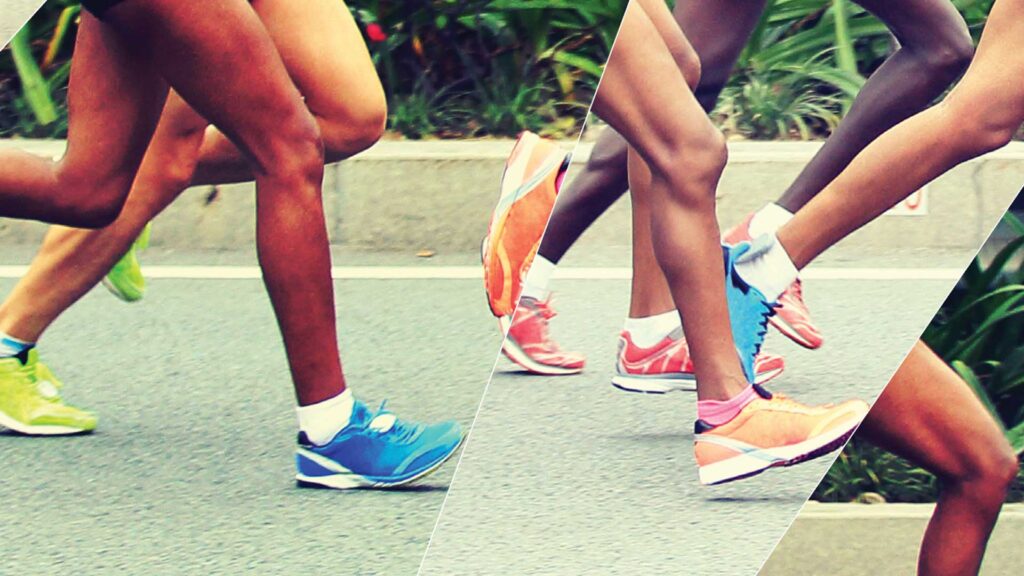 Chronic tendon pain is something most runners face at one point or another. When the injury is acute, there is obvious inflammation and tears in the tissue. Time, relative rest, ice and a gradual return to running usually does the trick. These are cases of tendinITIS.
Chronic tendon pain is something most runners face at one point or another. When the injury is acute, there is obvious inflammation and tears in the tissue. Time, relative rest, ice and a gradual return to running usually does the trick. These are cases of tendinITIS.
However, once pain persists beyond 6 months, the origin of that pain completely changes. I have written about the subject before here. In summary, the tears and inflammation are gone. The pain persists from a not entirely known mechanism which includes lingering pain neurotransmitters that no longer belong in the tissue, and new blood vessels penetrating into the tissue and bringing pain sensing nerve fibers with them. The tissue is hypersensitive. It has healed after 6 months, but it has not “learned” to be normal again. These are cases of tendinOSIS.
 The reason I am bringing this up because I just came across a review study that puts into question a commonly recommended treatment protocol: eccentric loading. Eccentric loading involves putting force through the tissue you are wanting to rehab as you take it from its short to long position. Almost 4 years ago I wrote about the importance of using eccentric loading, and it is something that the research has supported. However, eccentric loading, as I have seen in practice and have long suspected, may not be the magical movement we once thought.
The reason I am bringing this up because I just came across a review study that puts into question a commonly recommended treatment protocol: eccentric loading. Eccentric loading involves putting force through the tissue you are wanting to rehab as you take it from its short to long position. Almost 4 years ago I wrote about the importance of using eccentric loading, and it is something that the research has supported. However, eccentric loading, as I have seen in practice and have long suspected, may not be the magical movement we once thought.
Study:
Take for instance this 2013 review study. In the article, they compare eccentric loading with other loading protocols that involve concentric (shortening the muscle as you load it) and isometric loading (no movement of the tissue as you load it).
Long story short, the exclusive eccentric loading protocol did not offer any advantage. In fact, in some instances, these other loading protocols out performed eccentric loading.
“The only potential mechanism that was consistently associated with improved clinical outcomes in both Achilles and patellar tendon rehabilitation was improved neuromuscular performance (e.g. torque, work, endurance), and Silbernagel-combined (Achilles) HSR loading (patellar) had an equivalent or higher level of evidence than isolated eccentric loading.”
Take home
The importance of the information presented within the review article is the following:
 If you have a chronically painful tendon, don’t eccentrically load it exclusively. Just load it. Load it in variable ways, keep pushing it in a calculated and controlled way, and retrain the tissue to act normally again.
If you have a chronically painful tendon, don’t eccentrically load it exclusively. Just load it. Load it in variable ways, keep pushing it in a calculated and controlled way, and retrain the tissue to act normally again.
It is also important to keep in mind that while it might not be a magical cure, eccentrically loading the tendon isn’t a mistake. I just think it’s short sighted to completely ignore the importance of loading the tissue in other ways.
Lastly, when you have a tendon that is chronically painful, there is no denying that exercise is the way to go. Common alternative options such as medication, surgery and cortisone shots are associated with less successful outcomes. In fact, cortisone injections are associated with an increased risk of tissue breakdown and future injury. When trying to eliminate chronic tendon pain, exercise that tissue. Be consistent, be progressive, be variable, and don’t rely exclusively on eccentric exercises.
Dr. Sean Delanghe, BSc. (Hons), DC is a chiropractor, coach, and a regular contributor to the RunWaterloo blog.




